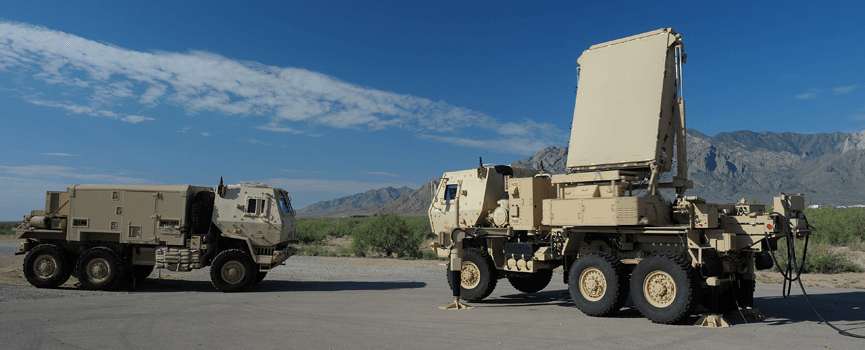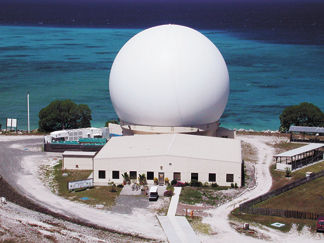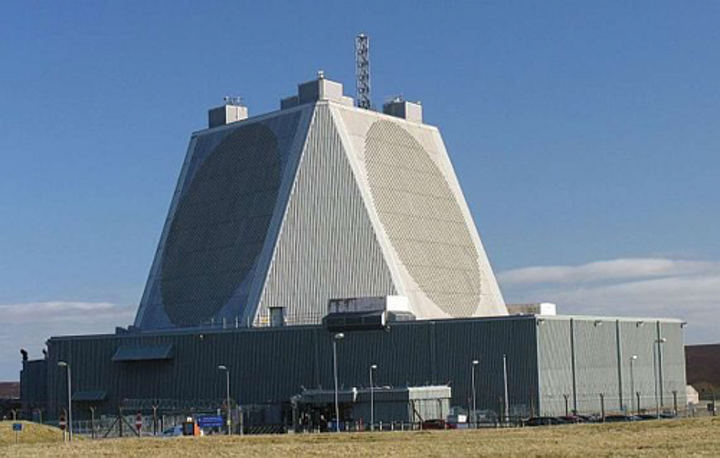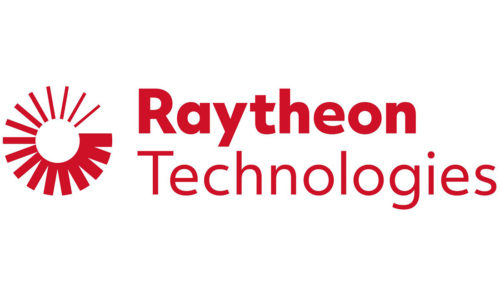
Ground Based Radars are Multi-mission capable radars with the ability to simultaneously detect ultra-low to high altitude targets while performing its normal surveillance mission. These radars are high-performing, high-reliability, solid state radar systems which are specialized in early warning, situational awareness, tactical ballistic missile surveillance, and defense. They can operate in all environments, are available in highly mobile configurations, and are deployed worldwide.
The Ground-Based Radar mechanically are slewed phased array radar system. It functions primarily as a fire control radar for ballistic missile defense.
Example: Lockheed Martin Ground Based Radar Surveillance Systems
https://www.youtube.com/watch?v=CA7I9-kYQm0
GROUND BASED RADARS - PRIMARY FUNCTIONS / RISKS INVOLVED
Ground Based Radars are primary fire control sensor, providing surveillance, acquisition, tracking, discrimination, fire control support and kill assessment for the Defense system. Prior to commitment of interceptors, the radar performs surveillance autonomously or as cued by sensors, and will acquire, track, classify/identify and estimate trajectory parameters for targets. In post-commit, the radar will discriminate and track the target(s), and provide via the Interceptor Communications System (ICS) an In-Flight Target Update (IFTU) and a Target Object Map (TOM) to the interceptor(s).
 The Ground Base Radars like (XBRs) also perform tracking, discrimination, and kill assessments of incoming ballistic missiles. XBRs use high frequency and advanced radar signal processing technology to improve target resolution, which permits the radar to discriminate against threats. The XBR will provide data from earlier phases of a ballistic missile trajectory and real-time in-flight tracking data to the Battle Management, Command, Control, and Communications (BMC3).
The Ground Base Radars like (XBRs) also perform tracking, discrimination, and kill assessments of incoming ballistic missiles. XBRs use high frequency and advanced radar signal processing technology to improve target resolution, which permits the radar to discriminate against threats. The XBR will provide data from earlier phases of a ballistic missile trajectory and real-time in-flight tracking data to the Battle Management, Command, Control, and Communications (BMC3).
How does an X-Band Radar Work - The XBR has a 50 degree field of view in both azimuth and elevation, and the radars can be rotated to track targets from any direction. The XBR would be radiating during a ballistic missile attack, testing, exercises, training, or when supporting collateral missions such as tracking space debris or a shuttle mission. The XBR radar transmit/receive radiation pattern would be a narrow beam with most of the energy being contained within the main beam. Lesser amounts of energy could be emitted in the form of grating or sidelobes in the area around the main beam. Each beam would consist of a series of electromagnetic pulses. The beam would be able to operate 360 degrees. At no time would the main beam be directed towards ground level.
These radars appear to have an average power of 170 kW and an antenna area of 123 square meters. This would appear to result in a power-aperture product of about 20 million. However, this overstates the search capability of the XBR, which has a "thinned" arrary with some 81,000 transmit-receive modules in the antenna, only one fifth the number of radiating elements that would be present in a fully populated phased array antenna. This thinned array decreases the gain of the radar by a factor of about 5, with more of the radar's energy going into sidelobes, producing an effective power-aperture product of less than 4 million. Fully populating the XBR antenna would increase its effective power-aperture by a factor of about 25. However, the additional transmit-receive modules would greatly increase the cost of the radar, since these solid-state active components are the dominant cost of the system.
The thinned array does permit a narrower beam, which allows greater tracking accuracy. This design tradeoff illustrates the extent to which the XBR is intended almost exclusively as a tracking and discrimination radar, relegating the surveillance function to the Upgraded Early Warning Radars [UEWR]. Since tracking information from the UEWRs will locate targets within a single XBR beamwidth, the XBR can concentrate its power output into one or at most a few beam postions. This means they can detect and track targets at long ranges despite their limited power-aperture. Against typical warheads ranges in excess of 4,000 km shoud be possible, and even against reduced signature targets ranges of 2,000 km appear plausible. More detailed signature analysis for discrimination of decoys requires a higher signal/noise ratio than simple tracking, and the range at which discrimination is possible would be significantly less than the maximum detection and tracking range.
 Resources / Manpower Needed - When fully operational, approximately 30 to 60 personnel would be associated with operating the XBR. Other support personnel requirements are dependent upon the location and amount of existing infrastructure. The XBR site would include a radar mounted on its pedestal and associated control and maintenance facility, a power generation facility, and a 150 meter (500-foot) controlled area. These requirements would encompass an area of approximately 7 hectares (17.46 acres) for the radar only. Other support infrastructure is site dependent.
Resources / Manpower Needed - When fully operational, approximately 30 to 60 personnel would be associated with operating the XBR. Other support personnel requirements are dependent upon the location and amount of existing infrastructure. The XBR site would include a radar mounted on its pedestal and associated control and maintenance facility, a power generation facility, and a 150 meter (500-foot) controlled area. These requirements would encompass an area of approximately 7 hectares (17.46 acres) for the radar only. Other support infrastructure is site dependent.
Health / Human Risk Involved - The XBR could be expected to operate throughout the X-band frequency range. Representatives of industry, scientific communities, physicians, Government Agencies, and the public have worked to develop consensus safety standards. The exposure limits established by are used to ensure that the public will not be impacted by electromagnetic radiation emitted from the XBR. The exposure limits are a function of time, power, and frequency. There are two exposure considerations: controlled environments and uncontrolled environments.
Controlled environments are areas where access is restricted to employees. The area within 150 meters (500 feet) of the radar would be a controlled area within government owned land, which would be fenced and controlled by security personnel to ensure no unauthorized access occurs. In addition, software computer programs would be used to ensure power densities would be in accordance with prescribed safety standards.
Uncontrolled environments, where there are no access restrictions, are locations such as public areas where there are no expectations that higher than normal radio frequency levels should be encountered. In the uncontrolled environment, the EMR would be below the permissible power density levels. There is a possibility television reception may be affected out to a distance of 5 kilometers (3 miles), and occasional static may occur in some radios out to 10 kilometers (6 miles). Computer monitors and other home electronics are not expected to be impacted.
XBR operations will require the implementation of controlled airspace surrounding the radar. Coordination between radar operators and the Federal Aviation Administration controllers will ensure that the radar main beam does not illuminate aircraft. To ensure aircraft bearing electro-explosive devices are not threatened by grating or sidelobes, control zones of 5 kilometers (3 miles) on the ground and 8 kilometers (5 miles) in the air will be established. Aircraft will not be subjected to main beam illumination inside of 50 kilometers (30 miles).
 Biological / Environmental Risks - Adverse biological effects from EMR to wildlife are not expected. There is a potential for higher levels of exposure to birds flying through the area of the main beam, but exposure would be only for short durations. The time-averaged power densities would not raise body temperatures or cause biological effects.
Biological / Environmental Risks - Adverse biological effects from EMR to wildlife are not expected. There is a potential for higher levels of exposure to birds flying through the area of the main beam, but exposure would be only for short durations. The time-averaged power densities would not raise body temperatures or cause biological effects.
Air and noise emissions would be associated with the electrical generators required to provide power to the site. These generators would only be required as backup power sources if commercial power to the site failed, or if required to support a mission. At sites where no commercial power is available, or where the reliability of commercial power does not meet system requirements, the generators would operate continuously. The air cooled condensing units and the antenna mount produce audible noise. These noise emissions would not be as loud as those associated with electrical generators. However, the condensers will operate continuously.


















Leave a Reply